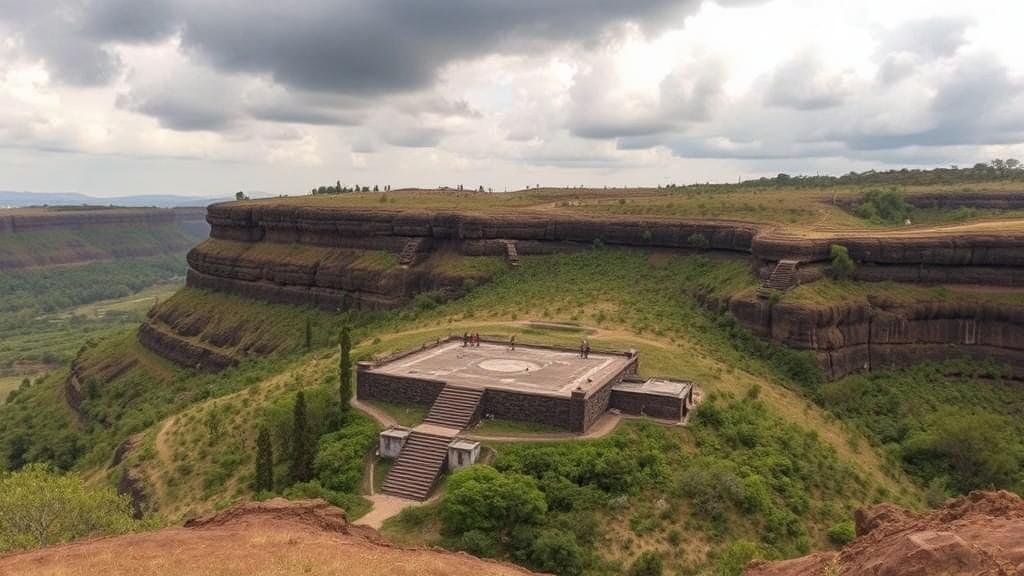Searching for the “Temple of the Sky Serpent,” a mysterious shrine in the Venezuelan tepuis.
Searching for the Temple of the Sky Serpent: A Journey into Venezuelas Tepuis
Deep within the heart of the Venezuelan rainforest lies a realm of ancient mysteries and breathtaking landscapes–an area dominated by the majestic tepuis, or table-top mountains. Among these natural wonders, the elusive Temple of the Sky Serpent beckons explorers, archaeologists, and adventurers alike. But what is the Temple of the Sky Serpent, and why does it hold such significance in both local folklore and modern exploration?
Understanding Tepuis: The Natural Marvels of Venezuela
The term tepui originates from the Pemon language, meaning mountain or table. These formations are not just picturesque; they are remnants of a colossal sandstone plateau that has eroded over millions of years. most notable tepuis include:
- Mount Roraima: Standing at 2,810 meters, it is regarded as the most famous tepui.
- Angel Falls: The world’s highest uninterrupted waterfall, originating from Auyantepui.
- Cerro Autana: Considered sacred by indigenous tribes, it resembles a spiritual conduit.
These geological structures house unique ecosystems, comprising flora and fauna found nowhere else on Earth, and their isolation has led to distinct evolutionary paths for various species.
The Legend of the Temple of the Sky Serpent
The Temple of the Sky Serpent is steeped in local mythology, often associated with the indigenous Yanomami and Pemon tribes. According to legend, the temple is a sacred site where the Sky Serpent, a powerful deity that symbolizes strength and fertility, resides. This enigmatic figure is believed to protect the surrounding landscape and its inhabitants.
Descriptions of the temple vary, with some claiming it possesses intricate carvings and symbols related to the celestial sphere, while others suggest it is an altar for ritualistic practices. Its exact location remains a subject of intrigue–clouded in myth, set against a backdrop of dense jungle and towering cliffs.
Expeditions and Modern Discoveries
While the temples existence is yet to be conclusively proven, several expeditions have sought to uncover its mysteries. Notable explorations include:
- The 2002 Expedition: Led by Venezuelan archaeologists, this team scoured the Gran Tepui region, collecting artifacts and interviewing local tribes to piece together the temple’s lore.
- The 2021 Exploration: An international group of adventurers attempted to retrace the steps of earlier expeditions using modern technology, including drone mapping and ground-penetrating radar.
Despite extensive research, the temple remains elusive, and some argue that it could well be a metaphorical representation of a cultures deeper connection to nature and spirituality rather than a physical structure.
Scientific and Cultural Significance
The search for the Temple of the Sky Serpent opens avenues for understanding both ancient cultures and the unique ecosystems of the tepuis. As researchers engage with local tribes, they uncover insights about the biodiversity and rich cultural practices that have persisted for centuries. For example, studies show that the tepuis are home to over 6,000 species of plants and animals, many of which are endemic.
Plus, by preserving these sites, there is potential for ecotourism, which can provide income and promote conservation initiatives. Organizations like the World Wildlife Fund (WWF) and National Geographic focus on sustainable practices that respect indigenous lands while educating visitors about the importance of these habitats.
Concluding Thoughts: The Quest Continues
The Temple of the Sky Serpent may remain shrouded in mystery, but its search fuels a connection to the natural world that is resonant and profound. Whether a physical construct or a symbol of natures grandeur, it reflects humanitys innate desire to explore the unknown. Each expedition not only inches closer to understanding the urgency of conservation or preservation of these peculiar environments but also reinforces the cultural heritage of Indigenous peoples.
As we continue to respect indigenous knowledge and utilize modern technology in exploration, the legend of the Temple may one day yield its secrets, enriching our understanding of both the natural world and the cultural narratives that shape it.



